 | ||
Similar Gum trees, Peppermint, Bergamot essential oil, English lavender, Lemongrass | ||
Homemade still for distilling essential oils extracting most plant oils eucalyptus oil shown
Eucalyptus oil is the generic name for distilled oil from the leaf of Eucalyptus, a genus of the plant family Myrtaceae native to Australia and cultivated worldwide. Eucalyptus oil has a history of wide application, as a pharmaceutical, antiseptic, repellent, flavouring, fragrance and industrial uses. The leaves of selected Eucalyptus species are steam distilled to extract eucalyptus oil.
Contents
- Homemade still for distilling essential oils extracting most plant oils eucalyptus oil shown
- Eucalyptus oil
- Types and production
- Medicinal and antiseptic
- Repellent and biopesticide
- Flavouring
- Fragrance
- Industrial
- Safety and toxicity
- History
- Species utilised
- Compendial status
- References
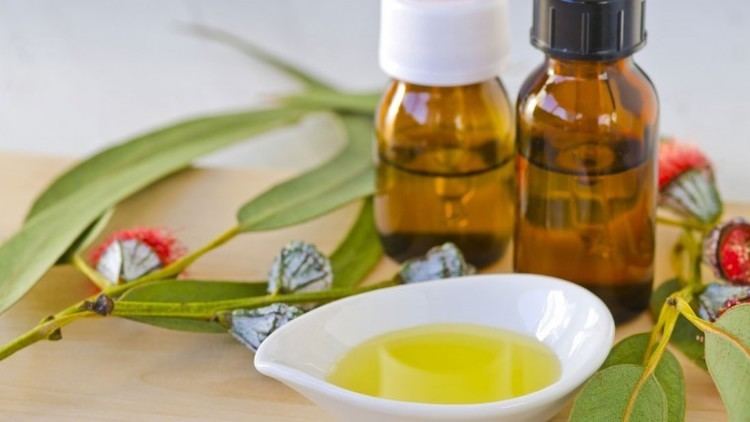
Eucalyptus oil
Types and production

Eucalyptus oils in the trade are categorized into three broad types according to their composition and main end-use: medicinal, perfumery and industrial. The most prevalent is the standard cineole-based "oil of eucalyptus", a colourless mobile liquid (yellow with age) with a penetrating, camphoraceous, woody-sweet scent.
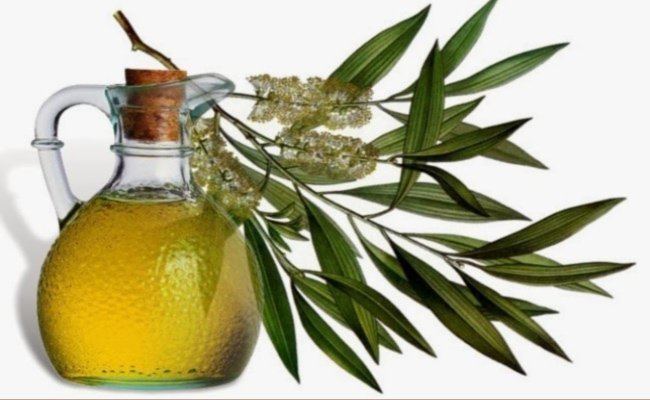
China produces about 75% of the world trade, but most of this is derived from the cineole fractions of camphor laurel rather than being true eucalyptus oil. Significant producers of true eucalyptus oil include South Africa, Portugal, Spain, Brazil, Australia, Chile and Swaziland.

Global production is dominated by Eucalyptus globulus. However, Eucalyptus kochii and Eucalyptus polybractea have the highest cineole content, ranging from 80-95%. The British Pharmacopoeia states that the oil must have a minimum cineole content of 70% if it is pharmaceutical grade. Rectification is used to bring lower grade oils up to the high cineole standard required. In 1991, global annual production was estimated at 3,000 tonnes for the medicinal eucalyptus oil with another 1500 tonnes for the main perfumery oil (produced from Eucalyptus citriodora). The eucalyptus genus also produces non-cineole oils, including piperitone, phellandrene, citral, methyl cinnamate and geranyl acetate.
Medicinal and antiseptic
The cineole-based oil is used as component in pharmaceutical preparations to relieve the symptoms of influenza and colds, in products like cough sweets, lozenges, ointments and inhalants. Eucalyptus oil has antibacterial effects on pathogenic bacteria in the respiratory tract. Inhaled eucalyptus oil vapor is a decongestant and treatment for bronchitis. Cineole controls airway mucus hypersecretion and asthma via anti-inflammatory cytokine inhibition. Pre-clinical results also show that eucalyptus oil stimulates innate cell-mediated immune response by effects on the phagocytic ability of human monocyte derived macrophages.
Due to its cleansing properties, Eucalyptus oil is found in mouthrinses to freshen breath and promote oral health

The main chemical components of Eucalyptus oil, eucalyptol and alpha-terpineol, give the essential oil a soothing, cooling vapor. This makes Eucalyptus oil useful for massage
Eucalyptus oil also has anti-inflammatory and analgesic qualities as a topically applied liniment ingredient.
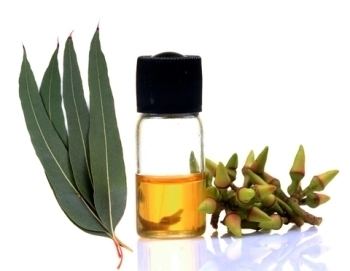
Eucalyptus oil is also used in personal hygiene products for antimicrobial properties in dental care and soaps. It can also be applied to wounds to prevent infection.
Repellent and biopesticide
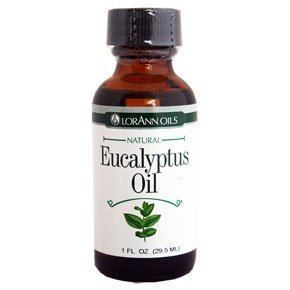
Cineole-based eucalyptus oil is used as an insect repellent and biopesticide. In the U.S., eucalyptus oil was first registered in 1948 as an insecticide and miticide.
Flavouring
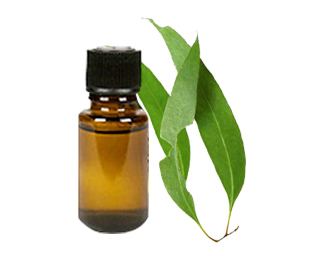
Eucalyptus oil is used in flavouring. Cineole-based eucalyptus oil is used as a flavouring at low levels (0.002%) in various products, including baked goods, confectionery, meat products and beverages. Eucalyptus oil has antimicrobial activity against a broad range of foodborne human pathogens and food spoilage microorganisms. Non-cineole peppermint gum, strawberry gum and lemon ironbark are also used as flavouring.
Fragrance
Eucalyptus oil is also used as a fragrance component to impart a fresh and clean aroma in soaps, detergents, lotions and perfumes. It is known for its pungent, intoxicating scent.
Industrial
Research shows that cineole-based eucalyptus oil (5% of mixture) prevents the separation problem with ethanol and petrol fuel blends. Eucalyptus oil also has a respectable octane rating and can be used as a fuel in its own right. However, production costs are currently too high for the oil to be economically viable as a fuel.
Phellandrene- and piperitone-based eucalyptus oils have been used in mining to separate sulfide minerals via flotation.
Safety and toxicity
If consumed internally at low dosage as a flavouring component or in pharmaceutical products at the recommended rate, cineole-based 'oil of eucalyptus' is safe for adults. However, systemic toxicity can result from ingestion or topical application at higher than recommended doses.
The probable lethal dose of pure eucalyptus oil for an adult is in the range of 0.05 mL to 0.5 mL/per kg of body weight. Because of their high body surface area to mass ratio, children are more vulnerable to poisons absorbed transdermally. Severe poisoning has occurred in children after ingestion of 4 mL to 5 mL of eucalyptus oil.
History
Australian Aboriginals use eucalyptus leaf infusions (which contain eucalyptus oil) as a traditional medicine for treating body pains, sinus congestion, fever, and colds.
Dennis Considen and John White, surgeons on the First Fleet, distilled eucalyptus oil from Eucalyptus piperita found growing on the shores of Port Jackson in 1788 to treat convicts and marines. Eucalyptus oil was subsequently extracted by early colonists, but was not commercially exploited for some time.
Baron Ferdinand von Mueller, Victorian botanist, promoted the qualities of Eucalyptus as a disinfectant in "fever districts", and also encouraged Joseph Bosisto, a Melbourne pharmacist, to investigate the commercial potential of the oil. Bosisto started the commercial eucalyptus oil industry in 1852 near Dandenong, Victoria, Australia, when he set up a distillation plant and extracted the essential oil from the cineole chemotype of Eucalyptus radiata. This resulted in the cineole chemotype becoming the generic 'oil of eucalyptus', and "Bosisto's Eucalyptus Oil" still survives as a brand.
French chemist, F. S. Cloez, identified and ascribed the name eucalyptol — also known as cineole — to the dominant portion of E. globulus oil. By the 1870s oil from Eucalyptus globulus, Tasmanian blue gum, was being exported worldwide and eventually dominated world trade, while other higher quality species were also being distilled to a lesser extent. Surgeons were using eucalyptus oil as an antiseptic during surgery by the 1880s.
The Australian eucalyptus oil industry peaked in the 1940s, the main area of production being the central goldfields region of Victoria, particularly Inglewood; then the global establishment of eucalyptus plantations for timber resulted in increased volumes of eucalyptus oil as a plantation by-product. By the 1950s the cost of producing eucalyptus oil in Australia had increased so much that it could not compete against cheaper Spanish and Portuguese oils (closer to European Market therefore less costs). Non-Australian sources now dominate commercial eucalyptus oil supply, although Australia continues to produce high grade oils, mainly from blue mallee (E. polybractea) stands.
Species utilised
Commercial cineole-based eucalyptus oils are produced from several species of Eucalyptus:
Non-cineole oil producing species:
The former lemon eucalyptus species Eucalyptus citriodora is now classified as Corymbia citriodora, which produces a citronellal-based oil.
